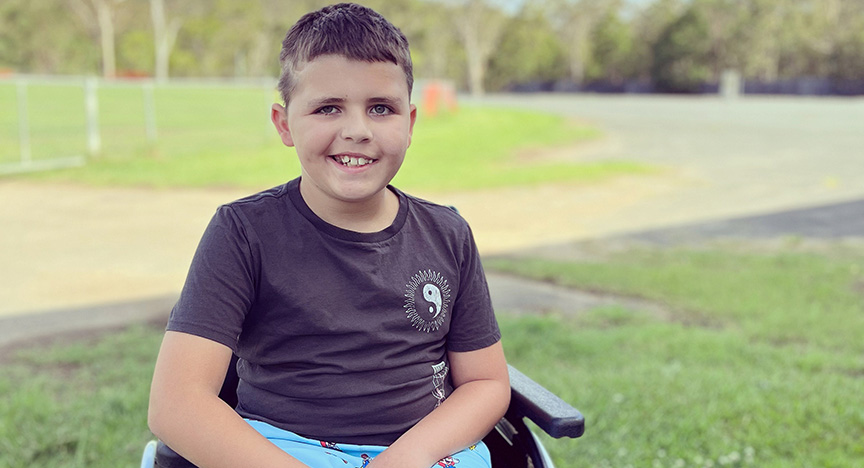
Van started experiencing epileptic seizures in 2016, but it would take four years to uncover the rare disease behind his condition.
A week before his fourth birthday, Van started vomiting multiple times a day. His family initially thought he had gastro but the episodes continued with no clear diagnosis.
Van’s mother Ash knew something wasn’t right and started recording the episodes.
“I began filming Van because his behaviour while vomiting wasn’t normal to me,” Ash said.
Five weeks later, Van had his first generalised tonic-clonic seizure while at home and was taken in an ambulance to the Queensland Children’s Hospital.
A generalised tonic-clonic seizure, formally called a grand mal seizure, is when a person loses consciousness and experiences violent muscle spasms.
While in hospital, Van suffered status epilepticus (when a seizure is too long or seizures occur too close together) and was admitted to the Paediatric Intensive Care Unit.
He was diagnosed with epilepsy; his episodes of vomiting were actually focal seizures, short seizures that occur in one side of the brain.
Van recovered within 24 hours and was prescribed antiepileptics to treat the seizures.
But Van’s seizures kept occurring. Every two weeks he would be readmitted to hospital and have his medication increased but eventually the seizures would return.
Van had brain surgery in May 2017 and July 2019 to treat the suspected underlying cause of his epilepsy but neither operation was successful.
Unfortunately the ongoing seizures, the significant surgeries and his medications left Van with an intellectual disability and minor left-side facial and hand weakness.
In 2020, Van was officially diagnosed with Rasmussen Syndrome, a very rare chronic inflammatory neurological disease that usually affects only one half of the brain.
The exact cause of the Rasmussen Syndrome is not known but it mainly occurs in young children.
Van’s family and care team exhausted several possible treatments: he was prescribed multiple antiepileptics, received IVIG infusions every month for 18 months and underwent a round of immunotherapy.
But the seizures were relentless and continued. At the end of 2022, Van was showing progressive cognitive decline, mild motor weakness and began showing seizure activity on the healthy side (left hemisphere) of his brain.
At the recommendation of his care team, Van underwent a hemispherectomy at the Queensland Children’s Hospital in November 2022 to disconnect the right hemisphere of his brain from the healthy left hemisphere. As a side effect of the surgery, Van has paralysis on the left side of his body and loss of vertical vision in his left eye.
Ash said rehabilitation has been tough on Van and the family but he had worked extremely hard to overcome any obstacle he faces.
He can now walk short distances unassisted and is back at school for half days. He is also being weaned off his antiepileptics.
“Most days he is very positive and has the odd flat day but it doesn’t last too long,” Ash said.
“He is extremely determined and has figured out ways to play his PlayStation one handed.
“He loves swimming and gets into the water any chance he has, which helps him feel so free and light.”
Van, age 10, and family now face the challenge of managing his physical disabilities but hope this is the end of his long battle with epilepsy.
“Always trust your gut; parents know their child best and if something doesn’t feel right then you’re probably right,” Ash said.
“Know your health rights and never, ever be scared to ask a doctor questions if you don’t completely understand what’s happening.
“With rare conditions like this, doctors can only do their best and they don’t know everything”.
Van receives ongoing care as an outpatient at the Queensland Children’s Hospital.